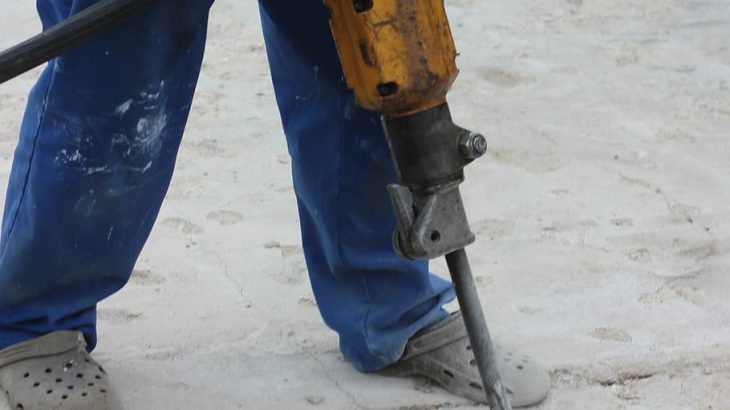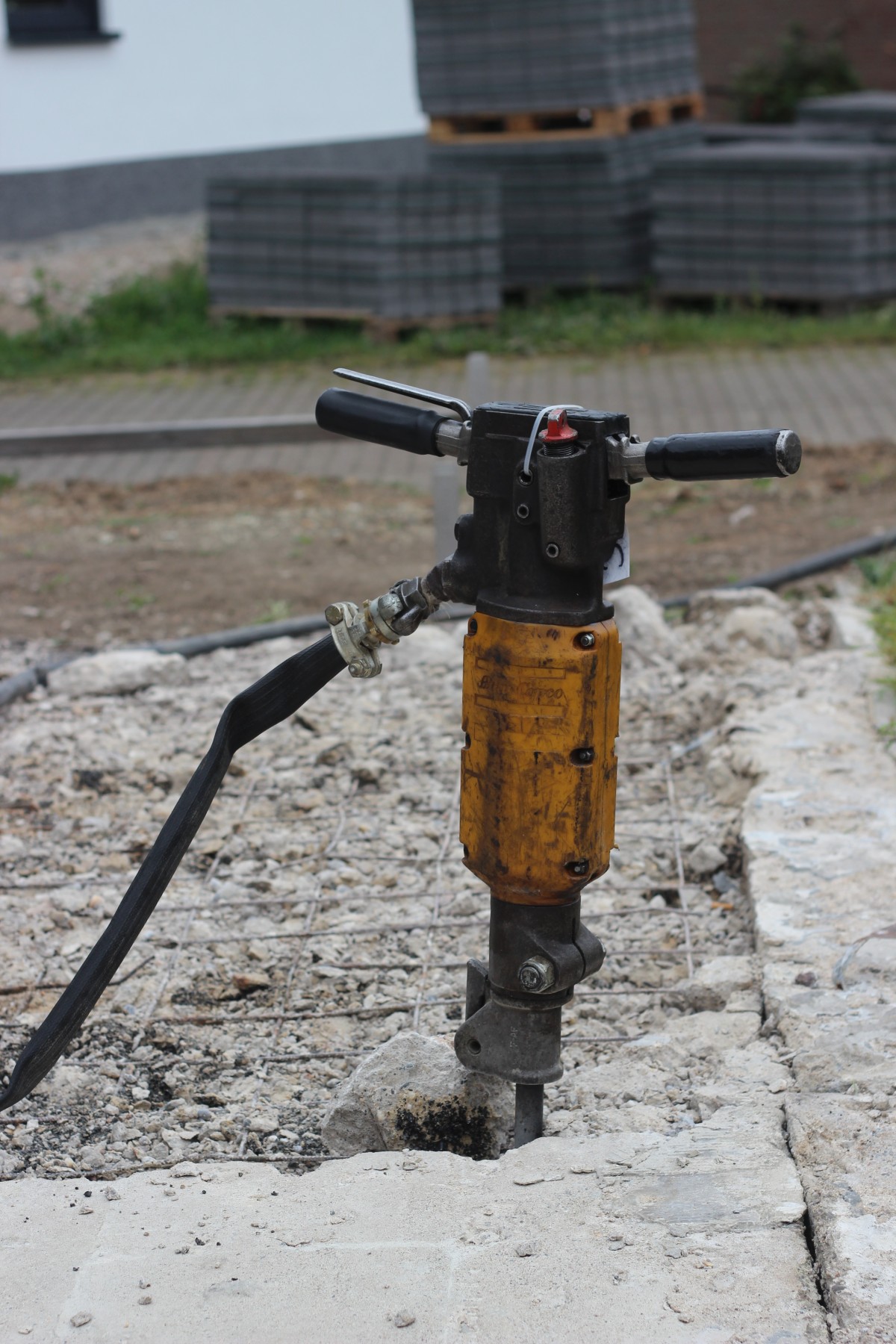The concrete breaker is a system connected to an energy source, allowing breaking concrete works by generating shocks with a tool adapted to the work (a blade, point, etc.). It is a compelling material, and its handling requires particular precautions.
Description of a concrete breaker
Concrete breakers are used for surface demolition, mainly slabs. They are composed of a tool holder, cylindrical in shape, ending with two handles to hold it. On the other side, a tool is driven by the shocks caused by the piston in the body of the tool holder. The device is chosen according to work carried out (a blade, chisel, punch, etc.).
They can be electric, hydraulic, or pneumatic. Their power is chosen according to the demolition to be carried out.
Electric concrete breakers
They are often intended for small electrical jobs. Some are improved percussion drills that you can operate horizontally or vertically.
Hydraulic breakers
According to the versions, the hydraulic breakers are adaptable at the end of the arm of a construction machine or used autonomously with a hydraulic power plant.
Pneumatic breakers
Pneumatic breakers require a sufficiently powerful construction compressor.
How to choose your breaker?
It would help if you asked a specialist for advice.
Depending on the size of the work to be done, different possibilities are available. But be aware that if your breaker is not powerful enough, you will be forcing it to do the demolition, at the risk of damaging the tool or the tool holder or even being unable to complete your task. If it’s too powerful, it can be dangerous for a layperson to handle or risk destroying something other than the intended work at the same time.
Good to know: there are vibration charts that allow you to adjust the choice of equipment to the work to be done (nature of the slab to be broken, thickness, surface, working time, efficiency, minimum power, etc.).
Concrete breaker: advice for use
You must follow the various instructions in the equipment’s manual. If there is no manual, or you do not have one, follow the tips below.
Lubricate the chisel housing and the tool before inserting it into the tool holder. You can switch on when you have checked that all parts are correctly adjusted and positioned the device on your work surface.
Regularly check the clearance between the holder and the striking tool. If there is too much clearance, you may break the chisel or damage the clamping device.
Use the breaker only for short intervals (about 10 seconds). Move the breaker, choose a new angle of attack, then turn it on again. The striking position is crucial; it should be at a 90° angle to the work surface, and the striking tool and the tool rest should be in line.
Do not try to force the tool. Work in small areas, starting at the edges of the work to be broken and then gradually moving toward the center, as if you were breaking down the grid elements in succession.
The stages of the work
Safety
The first step is to equip yourself with the recommended personal protection. A concrete breaker is a powerful tool that causes significant noise pollution, extreme vibrations, and projections of rubble. You will be working on heavy materials with heavy equipment, so you must be well protected.
For clothing, choose a sturdy, neck-to-toe suit with long sleeves. At a minimum, wear earplugs, a helmet, gloves, safety glasses, and safety shoes. If necessary, also use a mask to avoid inhaling too much dust.
If your equipment is connected to the electrical network, ensure that the chosen socket has the necessary power and a suitable circuit breaker protects it. Extension cords should be avoided and even prohibited if you work in a wet area or rainy weather.
Prepare the work area.
Make sure as much as possible that there are no utilities (water, gas, electricity, telephone) near, under, or in the structure you are going to break.
Clean the area well to eliminate wood waste, leaves, various debris, tools. Anything that can impede your progress or be thrown around by shock and vibration is a hazard. Electrical cables and power hoses must be grouped together and correctly positioned outside the immediate work area.
Necessary: ask the Town Hall for information. Depending on the work location, you may be required to make a declaration of intent to start work, which is sent to the network operators.
Carry out the work
Work on a stable surface, without forcing, without using the tool as a lever to try to go faster. Look for existing cracks and enlarge them; it will be easier. Remove concrete debris as you go.
Please wait until the tool holder has come to a complete stop before placing it on the ground. If the tool gets stuck in the ground, stop the breaker, separate it from the device, and push the crack apart with a crowbar until you can pull the tool out. Check for damage before reassembling and resuming work.
When the job is complete, clean the surface of any debris removed during the demolition and store your equipment.
Caution: If you must store tools, keep them well greased and protected from the elements. Remember that a rusty tool can cause damage to the process and even premature and dangerous breakage.
Price of a concrete breaker
Buying a concrete breaker is only justified for professionals. However, you can rent it: count from $50 to $100 per day for a hydraulic breaker and its power plant, depending on the chosen power and the rental period.





















